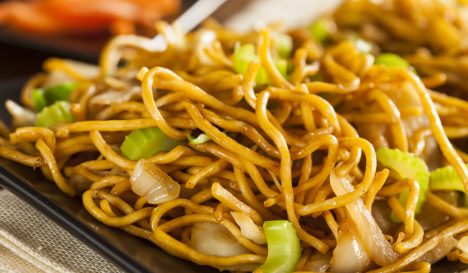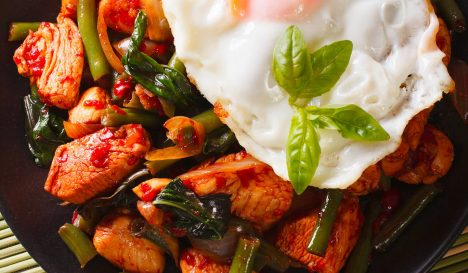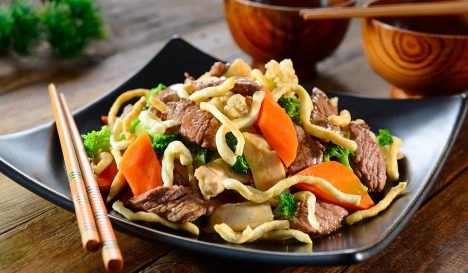Pad thai
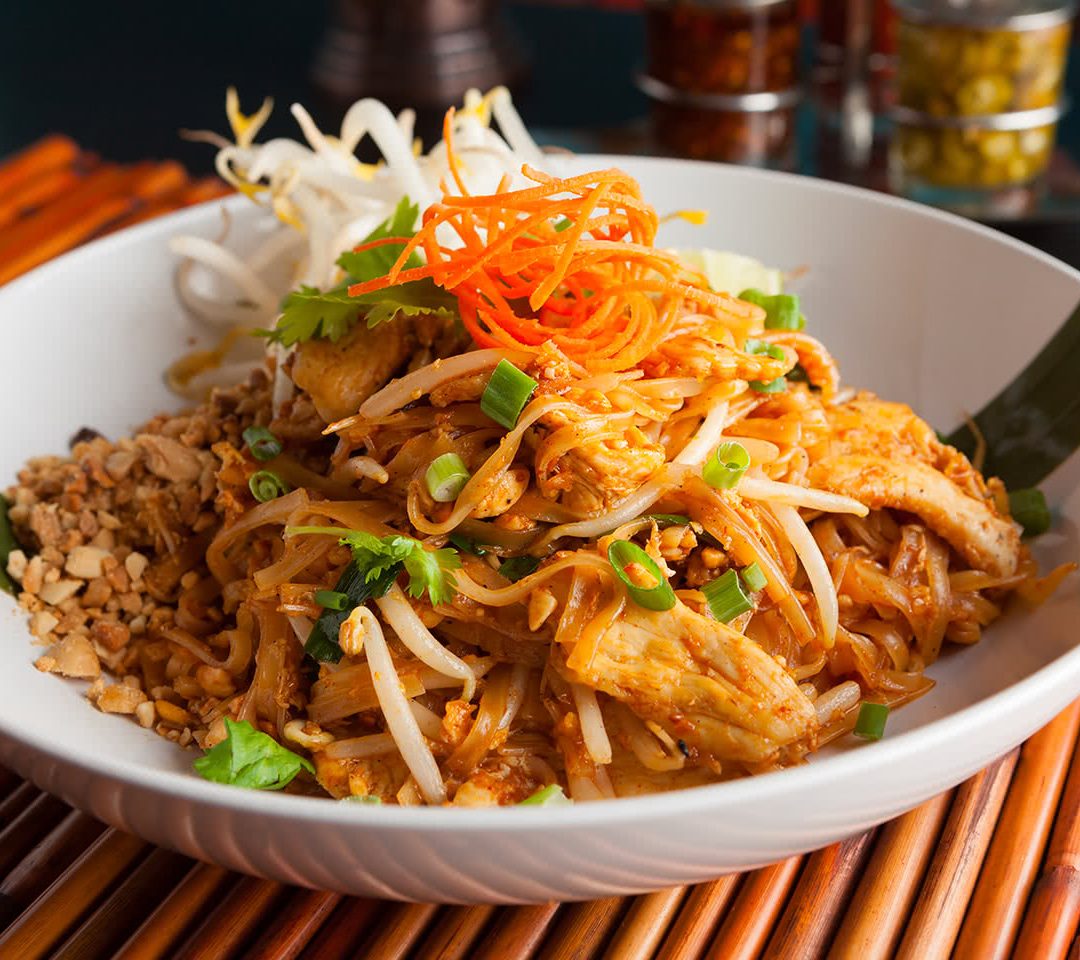
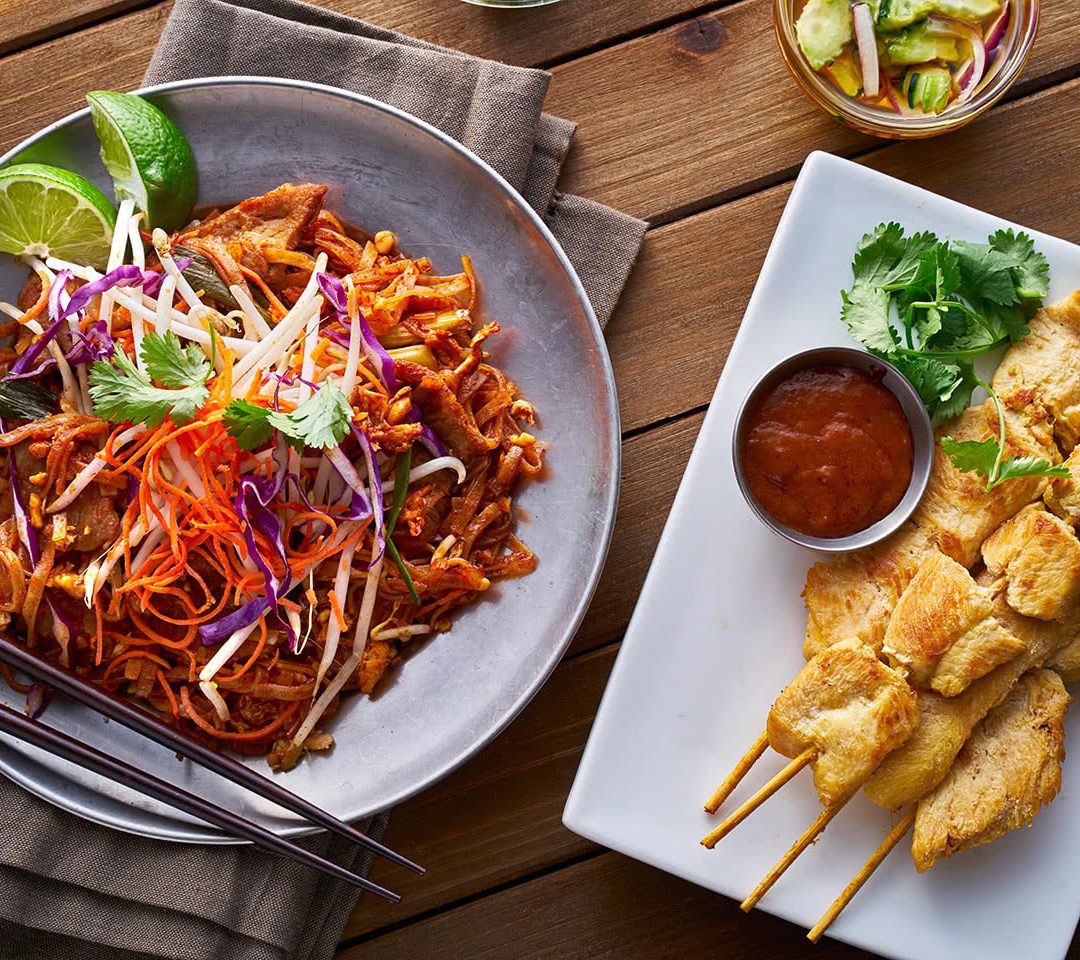
Pad thai
- What is pad thai?
- Did you know...
- How to make pad thai
- How to eat
- Difference between pad see ew and pad thai
- Also try
-
Kitchen Thai cuisine
-
Basis Noodles / pasta
-
Dish type Main course
-
For who Noodle lovers
-
Spiciness pepper pepper pepper
What is pad thai?
Pad thai (pronounced “paht thai”) literally means “Thai stir-fry”. It is a rice dish where the noodles are stir-fried with a sweet and sour sauce, egg, vegetables and meat, fish or tofu. You also get chopped peanuts, sugar, chilli powder, chilli peppers in vinegar and fish sauce to personalise the noodles. A good pad thai has the golden combination of sweet, sour, salty and spicy without any of these flavours dominating.
As the most famous dish from Thai cuisine, pad thai is on the menu of – almost literally – every Thai restaurant in the world. It is even available as a microwave meal in some countries.
Like many Thai dishes, pad thai can also be prepared with your choice of meat, fish or tofu. A well-known version has shrimps and tofu, but there are also versions with chicken, crab or even lobster. Some chefs serve their pad thai in an egg crepe, while there are regions where pork and lard play an important role. The similarity lies in the use of the pad thai sauce with its dried shrimps, which give the whole a subtle saltiness.
Did you know...
It seems that pad thai was invented during a national competition to invent a Thai noodle dish, in the late 1930s. Behind the game were nationalistic feelings; most noodle dishes had a Chinese background and people sometimes wanted to put a real Thai dish on the menu. The winning meal was entitled “Thai stir-fry”. The hope was that the dish would help the Thai to feel united as a people.
How to make pad thai
The sauce is the most important part of a good pad thai: a mixture of palm sugar, fish sauce, tamarind and water. This is mixed in advance and waits to be added. The rice noodles are soaked in cold water, all other ingredients are sliced, and the stir-frying is then ready to begin. Shallots, dried shrimps, black radish, garlic and chilli powder are briefly fried together with the tofu. The soaked noodles are stir-fried and then the pad thai sauce is added. While stirring, the noodles are steamed in the moisture of the sauce, absorbing the flavours. As soon as the moisture has evaporated, the egg is added. Finally – when the heat is already turned off – bean sprouts and Chinese chives are added to the still-hot pan. The prawns, which are fried separately until just tender, are placed on top. The dish is served with a slice of lime, extra peanuts, bean sprouts, Chinese chives and chilli powder. Don’t forget to squeeze the lime above the dish! It adds a fresh note that takes the dish to a higher level.
How to eat
Thai people only use chopsticks when eating noodle dishes. For all other (rice) dishes they use a spoon and fork. This means that Pad Thai can be eaten with chopsticks, but a spoon and fork are also allowed and nobody will find it strange.
Difference between pad see ew and pad thai
Both pad see ew and pad thai are popular Thai street foods with distinctive core flavours and ingredients. Pad see ew, which means “stir-fried soy sauce noodles,” is made with flat rice noodles, vegetables, and meat (commonly pork, beef, or seafood), with a sauce that is sweet and smoky with just a hint of sour. Pad thai is typically made with thinner rice noodles, and again combined with vegetables and meat (usually chicken or shrimp), then sauteed with a tangy tamarind sauce, and topped with lime and crushed peanuts.
Also try
Yakisoba is the Japanese version of fried noodles, the Chinese eat chow mein, and Indian cuisine features noodle goreng. Or turn up the spiciness factor with this less well-known but definitely no less tasty stir-fry dish: pad krapow.

